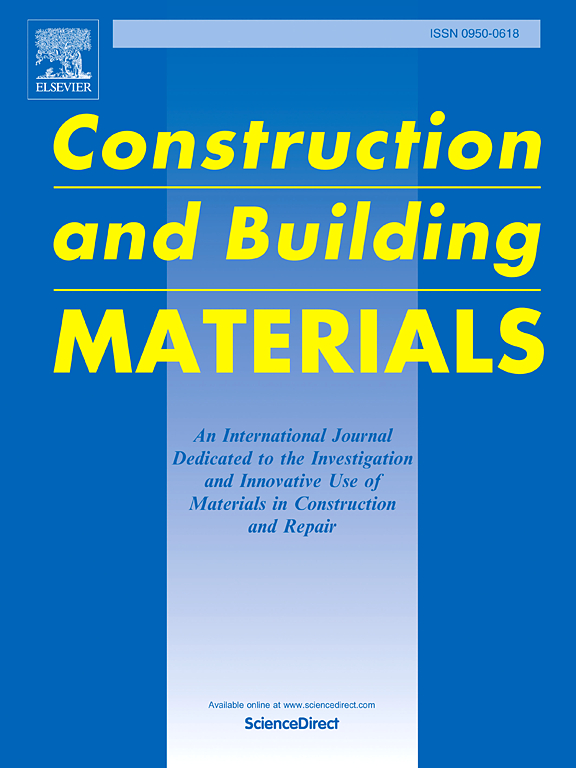Investigating the modifying mechanism of polyphosphoric acid on asphalt: From the colloidal component perspective
IF 7.4
1区 工程技术
Q1 CONSTRUCTION & BUILDING TECHNOLOGY
引用次数: 0
Abstract
This study separated four colloidal components of polyphosphoric acid (PPA) modified asphalts, which were made with three base asphalts from different oil sources and two grades of PPA. Frequency sweep tests were conducted on 27 of these oily components to obtain viscoelastic parameters according to the Williams-Landel-Ferry (WLF), Arrhenius, and standard logistic models. Infrared spectroscopy was used to gather molecular structural information of all components, and a semi-quantitative analysis method was applied to assess the molecular structural changes of each component. The results show that the rheological properties of the same components from different base asphalts vary to some extent, indicating differences in molecular structure. This leads to differential effects of the two grades of PPA on each oily component. Specifically, PPA significantly increases the complex modulus (G*) of the resins. Moreover, PPA with longer molecular chains shows a greater increase in the G* for the resins with lower aromaticity. Meanwhile, the G* of the aromatics and saturates exhibits distinct trends after PPA modification. First, this result indicates that PPA can indeed react with each asphalt oily component to some extent, causing changes in the rheological properties of the lighter components. Second, the significance of this reaction is determined by the aromaticity of the asphalt molecular structure and the polarity of the PPA molecules. The infrared spectroscopy results show that PPA significantly increases the polarizability of asphaltenes and resins. Furthermore, the functional groups of PPA mainly precipitate in the asphaltenes. This indicates that there is a substance transfer occurring within the asphalt during PPA modification. The study results point out that after PPA modification, the mechanical properties of the lighter components (serve as the dispersed phase) will change to varying degrees, which is also one of the important factors leading to the changes in asphalt performance. The oil-source-induced variability of PPA-modified asphalt is affected by the molecular weight and aromaticity of the asphalt molecules.
求助全文
约1分钟内获得全文
求助全文
来源期刊

Construction and Building Materials
工程技术-材料科学:综合
CiteScore
13.80
自引率
21.60%
发文量
3632
审稿时长
82 days
期刊介绍:
Construction and Building Materials offers an international platform for sharing innovative and original research and development in the realm of construction and building materials, along with their practical applications in new projects and repair practices. The journal publishes a diverse array of pioneering research and application papers, detailing laboratory investigations and, to a limited extent, numerical analyses or reports on full-scale projects. Multi-part papers are discouraged.
Additionally, Construction and Building Materials features comprehensive case studies and insightful review articles that contribute to new insights in the field. Our focus is on papers related to construction materials, excluding those on structural engineering, geotechnics, and unbound highway layers. Covered materials and technologies encompass cement, concrete reinforcement, bricks and mortars, additives, corrosion technology, ceramics, timber, steel, polymers, glass fibers, recycled materials, bamboo, rammed earth, non-conventional building materials, bituminous materials, and applications in railway materials.
 求助内容:
求助内容: 应助结果提醒方式:
应助结果提醒方式:


